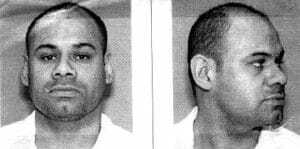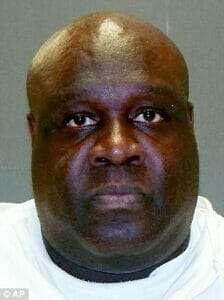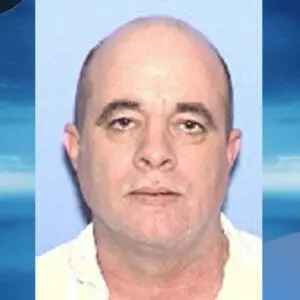
Kent Sprouse was executed by the State of Texas for two murders including the death of a police officer. According to court documents Kent Sprouse would shoot and kill the first victim, Pedro Moreno, in the parking lot of a gas station. When police arrived to investigate Kent Sprouse would open fire killing Harry Marvin “Marty” Steinfeldt III. Kent Sprouse would be arrested, convicted and sentenced to death. Kent Sprouse would be executed on April 9, 2015
Kent Sprouse More News
Texas prison officials on Thursday executed a man convicted in the slaying of a Dallas-area police officer during a 2002 shootout that followed the killing of a customer outside a convenience store.
Kent Sprouse, 42, became the fifth convicted killer put to death this year in Texas, the nation’s most active death penalty state.
Before his execution, Sprouse apologized to the families of his victims and his own family “for all the trouble I’ve caused everyone.” Then he thanked his family for their support.
“I guess that’s it,” he said.
As the lethal drug began taking effect, he said he could “smell it,” then added the drug “started to hit me with that $10,000.”
He took several deep breaths, then began snoring. Within a minute, all movement stopped. He was pronounced dead 22 minutes later at 6:33 p.m. CDT.
The U.S. Supreme Court refused to review Sprouse’s case in November, and no last-day appeals were filed for him in the courts.
Sprouse was sentenced to death for the October 2002 killing of 28-year-old Harry Marvin “Marty” Steinfeldt III, a police officer in Ferris, about 20 miles south of Dallas.
Witnesses said Sprouse carried a shotgun into the Ferris Food Mart store while he made a purchase and then walked outside and fired toward two men at a pay phone. He went to his car and appeared to have some trouble with it, then shot and killed 38-year-old Pedro Moreno, a customer who was pumping gas near him.
Steinfeldt responded to a 911 call about a customer shot at the store and came under gunfire. He was struck twice under the arm where his protective vest did not cover him. He managed to fire 17 shots, reloading his gun once, and wounded Sprouse in the chest, leg and hand.
Court records indicate Sprouse told an officer who accompanied him in an ambulance to a hospital that he believed Moreno was an undercover officer, so he shot him.
“And I shot the other officer that was in uniform,” Sprouse said, according to the records.
Sprouse was charged in Moreno’s killing, but wasn’t tried for it.
Relatives of both Steinfeldt and Moreno declined to speak with reporters after Sprouse’s execution. Michelle Steinfeldt released a statement saying the execution was “the emotional end of a long, excruciating journey.”
Tests showed that Sprouse, a Boone County, Missouri, native, had taken methamphetamine and other illegal drugs within 48 hours of the killings.
Jim Jenkins, who was Sprouse’s lead lawyer at his trial in Steinfeldt’s death, said Sprouse suffered from the effects of methamphetamine addiction.
“It’s very addictive and easy to get and sort of melts your brain after a while,” Jenkins said last week, recalling the case.
“He just didn’t know what he was doing, but the jury has to buy that. It’s sort of like being drunk and killing somebody. That’s really not a defense, not a legal defense. … The whole thing is extremely sad.”
Texas Department of Criminal Justice officials said a recent purchase of pentobarbital means they have enough of the sedative to carry out three other executions set for this month, including one next week. But at least three more are set for May and June, meaning they would have to find a new supply or switch to a different drug to carry out those executions on schedule.
Death penalty states have found it increasingly difficult to acquire execution drugs because traditional manufacturers now refuse to sell their drugs for use in executions. States now rely on compounding pharmacies for their made-to-order execution drugs.








